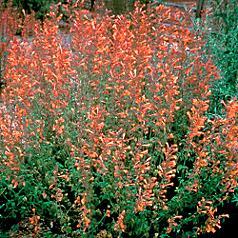We are very fortunate to live in an area populated with many beautiful and unique public gardens. Last week we visited one of my favorites. Chanticleer Garden in Wayne, PA features 35 acres open to the public from April through October.
The estate was built by Rosengarten family in the early 20th century as a “country retreat” from their Philadelphia home and pharmaceutical business. Like the DuPonts who also made their money in chemicals, they left a tremendous public legacy, turning their home into a premier garden and opening it to the public upon their death.
Still relatively new, the garden opened for visitors in 1993. 14 gardeners and groundskeepers manage the estate. Chanticleer has a whimsical feel and doesn’t take itself too seriously. The gardens are comprised of several areas ranging from tropical plants and seasonal potted displays around the house, vegetable and cut flower gardens, a folly garden built around a stone “ruin” with several water features, koi ponds with water plants and an Asian-inspired woods which is a great retreat on a 95 degree day in July. Sprinkled throughout the garden are art pieces primarily crafted by the gardeners including an intricately carved bridge, painted Aderondack chairs, a small shed painted with a woodland mural which my kids LOVE, and other sculptures.
Our staff takes a field trip every summer to visit local gardens, and we have had the pleasure to visit Scott Arboretum, Longwood, Winterthur, Mt. Cuba, Ladew, the Tyler Arboretum and Goodstay. Many of these places in addition to lovely grounds, also have an educational component. They offer classes on plant identification, photography, landscape design, and native plants. This combination of quality botanical gardens and education leads to people interested in and aware of beautiful landscapes. These consumers demand the plants they see used, which in turns creates a need for wonderful quality garden centers and greenhouses. There are very few places in the country where you can drive around and see the quality of landscape plantings in regular neighborhoods as in Southeastern PA, Delaware and Northern Maryland.
So I offer my thanks to the DuPonts, the Rosengartens, the Copelands and the Wheelrights and those like them who made their fortunes in this great country and used their resources to build something beautiful that will live on and inspire others long after they were gone.

 These columns are mostly fueled by comments or questions by our customers. Given the queries of the last few days, hydrangeas are a subject that needs addressing.
These columns are mostly fueled by comments or questions by our customers. Given the queries of the last few days, hydrangeas are a subject that needs addressing. you say “hydrangea”. They are native to Japan, which has a more maritime climate. This gives an explanation why they don’t always bloom well for us here. Traditionally, flower buds were formed in the late summer of the previous year. A frigid winter, or late cold snap kills the buds, robbing us of a summer’s worth of flowers. I have one in my yard, that I haven’t seen bloom in several years. Plant breeders put their thinking caps on and about 10 years ago introduced reblooming hydrangeas. Endless Summer ™ was the first, followed by Let’s Dance™ hybrids and Forever and Ever™ selections. Regardless of the cultivar, the idea is the same. Even if the old buds are wiped out over the winter, the new season’s growth will still flower. Win-win.
you say “hydrangea”. They are native to Japan, which has a more maritime climate. This gives an explanation why they don’t always bloom well for us here. Traditionally, flower buds were formed in the late summer of the previous year. A frigid winter, or late cold snap kills the buds, robbing us of a summer’s worth of flowers. I have one in my yard, that I haven’t seen bloom in several years. Plant breeders put their thinking caps on and about 10 years ago introduced reblooming hydrangeas. Endless Summer ™ was the first, followed by Let’s Dance™ hybrids and Forever and Ever™ selections. Regardless of the cultivar, the idea is the same. Even if the old buds are wiped out over the winter, the new season’s growth will still flower. Win-win. Agastache is at the top of my list for hummingbird and pollinator friendly plants.
Agastache is at the top of my list for hummingbird and pollinator friendly plants.